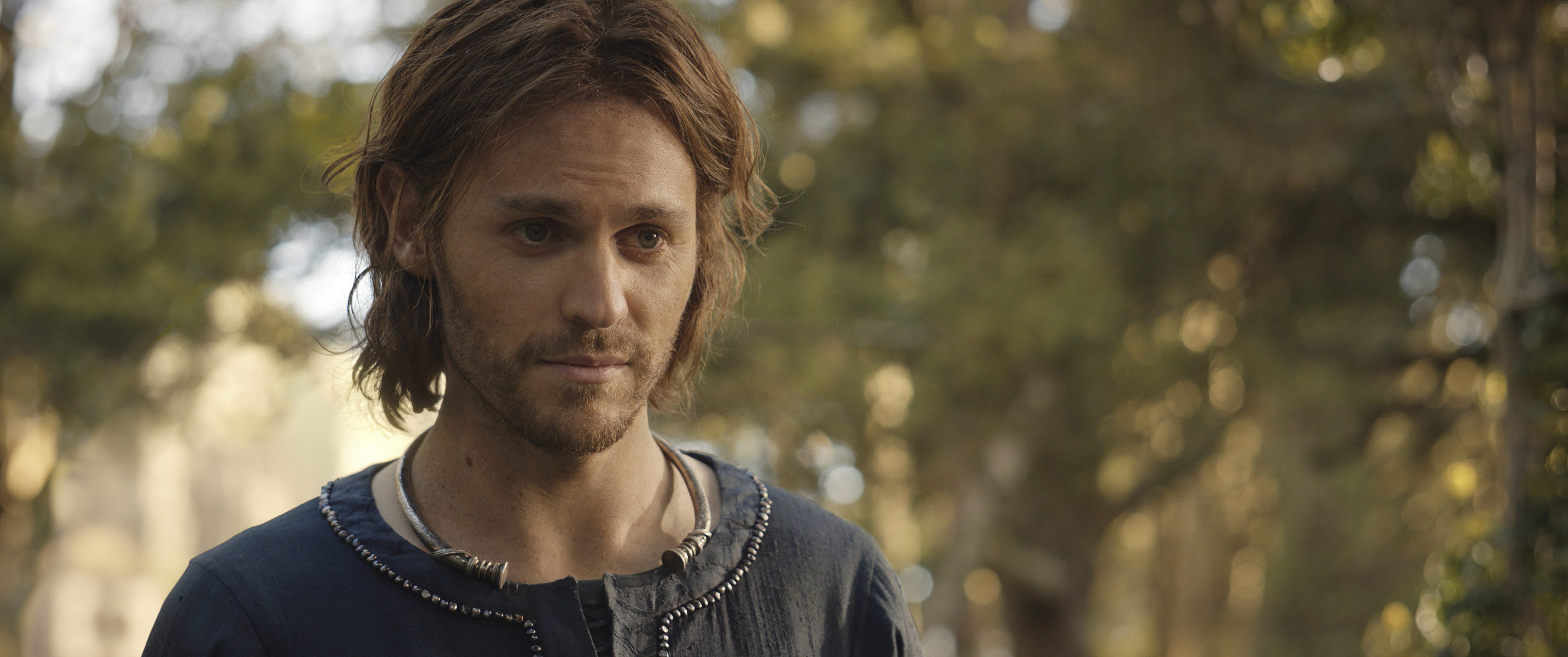
The Stranger is making his way through a wet and mucky Eryn Galen and once again, we find ourselves hoping upon hope that at least some of these characters get a chance to take a bath soon. Anyone who isn’t an elf or a Númenorean tends to be caked in dirt a lot. He pulls out the apple Nori gave him and remembers her telling him that he’s not a peril, setting up the conclusion of his character arc for the season. He follows a small cloaked figure through the woods, who shows herself to be Nori before revealing her true form, the icy-eyed sorceress known as The Dweller. Just a small aside here to note how well done the forced perspective and scale shots have been in this show when it comes to depicting beings of various sizes. Note how much smaller Nori is under the cloak before the much larger Dweller reveals herself. It all feels very natural and both the effects team and the actors are doing a very good job of making it feel that way. It’s one of the areas in which this show actually exceeds the work done on the two trilogies. There are no shots of characters talking to each other with their eyes focused on the distance because they’re actually nowhere near each other. The Ascetic and the Nomad appear and the three sorceresses pledge their loyalty to him and name him as Sauron. We didn’t believe it for a second; not just because of the misdirection of making him appear to be Gandalf, but also because thematically, it just doesn’t fit with Tolkien to have Sauron be an addled wanderer who just wants to be good. As we’ll see in a bit, that’s just not who Sauron is at this time, if he ever was that sort of being.
In related news, Galadriel and an unconscious Halbrand ride to Eregion, where Celebrimbor and Elrond are sadly weighing their options now that the Dwarves have refused them access to their mithril. “If only there was some way of doing more with less,” Celebrimbor muses. While we appreciate the attempt to flesh out the thinking process that actually led Celebrimbor to create the Elven rings, these scenes where they dance around the idea do come off a little silly and unnecessary, with unneeded “explanations” like the mithril needing to be in a circle of some form so that the light could something-something. Just say Elves like pretty jewelry and they only had enough mithril to make some rings. It really didn’t need to be this torturous process when we all know what’s going to happen. After all, we’re not talking about some esoteric bit of Tolkien lore here. It’s the actual title of the show. Also, we never got into this during the season, but why exactly is Celebrimbor middle-aged? Why would any Elf be visibly middle-aged? But that’s neither here nor there because a sweaty Galadriel comes riding up with the so-called King of the Southlands in tow, to the shock of Elrond. They compare notes, each of them surprised to see the other in Eregion. He admits to her that he’d made a mistake to think she should have gone to the Undying Lands and promises her that he won’t make the same mistake again. She is visibly moved by this, an indication of just how much Elrond’s betrayal hurt her.
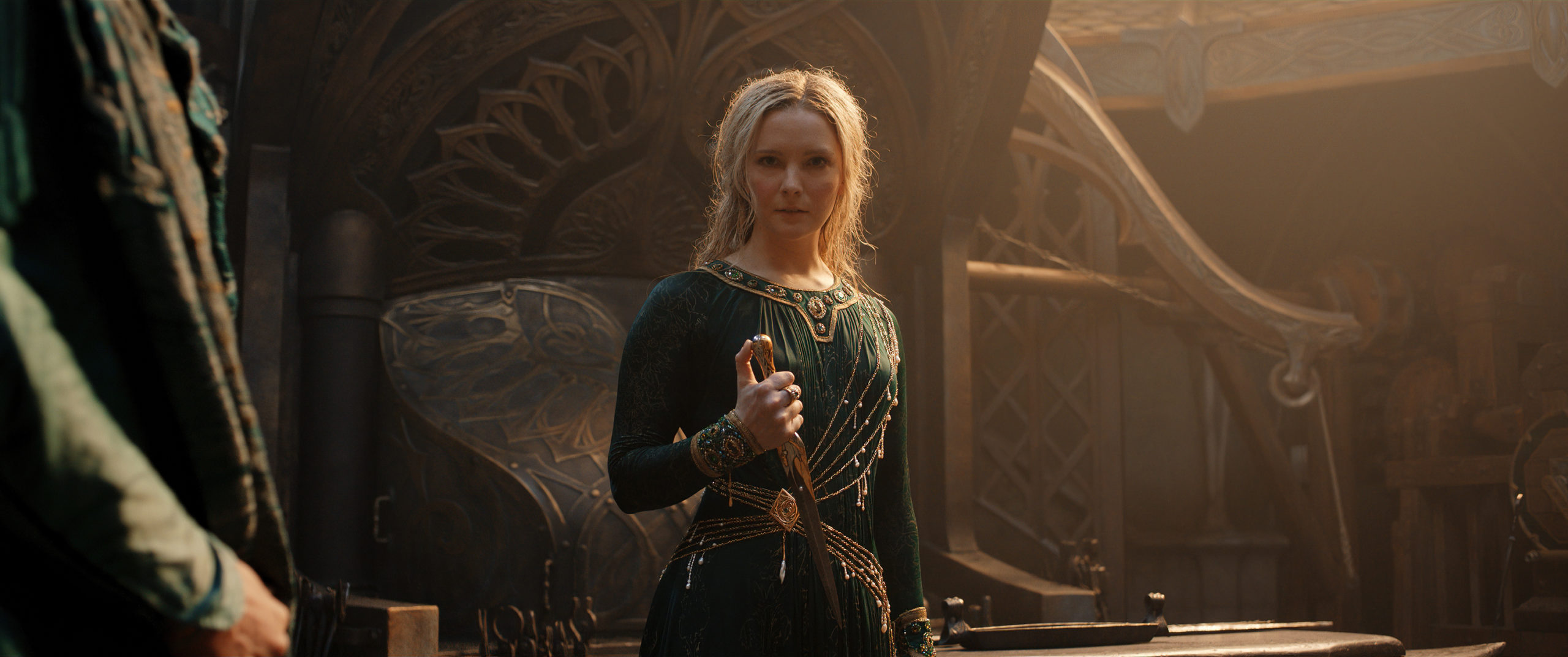
Somehow, Halbrand, who was dying literally a minute earlier, is found by Celebrimbor wandering his workshop (an absolutely gorgeous set, by the way) with interest. As soon as the scene started, we could feel the show putting all its cards on the table. This Halbrand isn’t the rough outlaw that pulled Galadriel out of the water or the noble leader of a beleaguered people. This Halbrand was a sweet-talker, and one of the core parts of the Tolkien legendarium is how Sauron was able to wile and flatter and influence people in his fair form. Some of the lore is being fiddled with a little here, since the Sauron who convinced Celebrimbor to make the Elven rings was in the form of an Elf himself, named Annatar, the Lord of Gifts. We get a little reference to this when Halbrand refers to his advice as a little gift. We suppose the creators felt it would be too much for the audience to see a version of Sauron shifting his form. Anyway, Halbrand flatters Celebrimbor by treating him as a legend and expresses a sudden extremely keen interest in his work; especially the discovery of mithril. His former vow to return to the Southlands to save his people has been evidently completely forgotten (but really, it was just another of his string of lies). Halbrand advises the master craftsman of the Elves to combine the mithril with another alloy in order to “amplify its properties” and we had to laugh a little about how vague the conversation got when talking about the “power” of mithril. Tolkien himself wasn’t all that keen on overly defining the various powers and magics of the unseen world. We suppose it’s enough to know that mithril has some sort of power and that it’s a good thing for the Elves. Still, given how much this series tends to over-explain certain things, it does feel like there’s a lot of hand-waving going on regarding exactly how the rings work.
In Numenor, Al-Pharazon is addressing a a gathering of apprentices around the deathbed of the King, who’s fading quickly. They have been brought there to spend time with the dying ruler in order to propose a monument to him after his death…? This all feels extremely tortured and borderline nonsensical. It’s clearly a way to give Eärien, Elendil’s daughter something to do. She is left alone with the dying king, because of course when a king is on his deathbed, everyone just leaves him unattended with some apprentice who’s never met him and has nothing to do with his care. He wakes up, confuses her for his daughter and says “I know what you have been doing in the dark of night when you thought all eyes were asleep,” which makes us wonder just what Miriel had been doing. He tells her that this island will be destroyed if the ways of their people are not restored (meaning their alliance with the Elves), opens the door to the palantir chamber, and bids Eärien to go take a look. Again, this feels extremely tortured. Whatever their plans are for Elendil’s daughter, they could have found a better series of circumstances to get her alone with a palantir.
Gil-Galad has arrived in Eregion and once again, we are confused by the characterization of him as stubborn and close-minded. He finds Celebrimbor’s plan to combine the mithril with an alloy to be a poor one, with little chance of saving the elves. And he’s clearly pissed at Galadriel for disobeying his orders. Celebrimbor urges the high king to reconsider, spewing some phrasing about “crafting a new kind of power,” “not of the flesh but over flesh,” that finally causes that lightbulb to go off over Galadriel’s head. These are the exact words Adar used to describe the kind of experiments Sauron was doing on Orcs. Gil-Galad is not moved and orders them to disband Eregion and leave the city immediately. Elrond asks Gil-Galad for three more months to try and craft the items Celebrimbor is proposing. Evidently he grants it, because work continues in Celebrimbor’s workshop with his brand new assistant, Halbrand, who apparently had nothing better to do. Galadriel is finally suspicious of his actions and waves down a passing loremaster to ask him to Google everything he has on the royal bloodline of the Southlands. She might have wanted to enact this due diligence before she pleaded with an entire country to support him. Halbrand marvels to her about the wonder of working with the legendary Elven smiths and thanks her for all that she did to make it possible for him, coming pretty close to ripping off the veil completely by whispering to her that he’ll make sure everyone understands what she did for him.
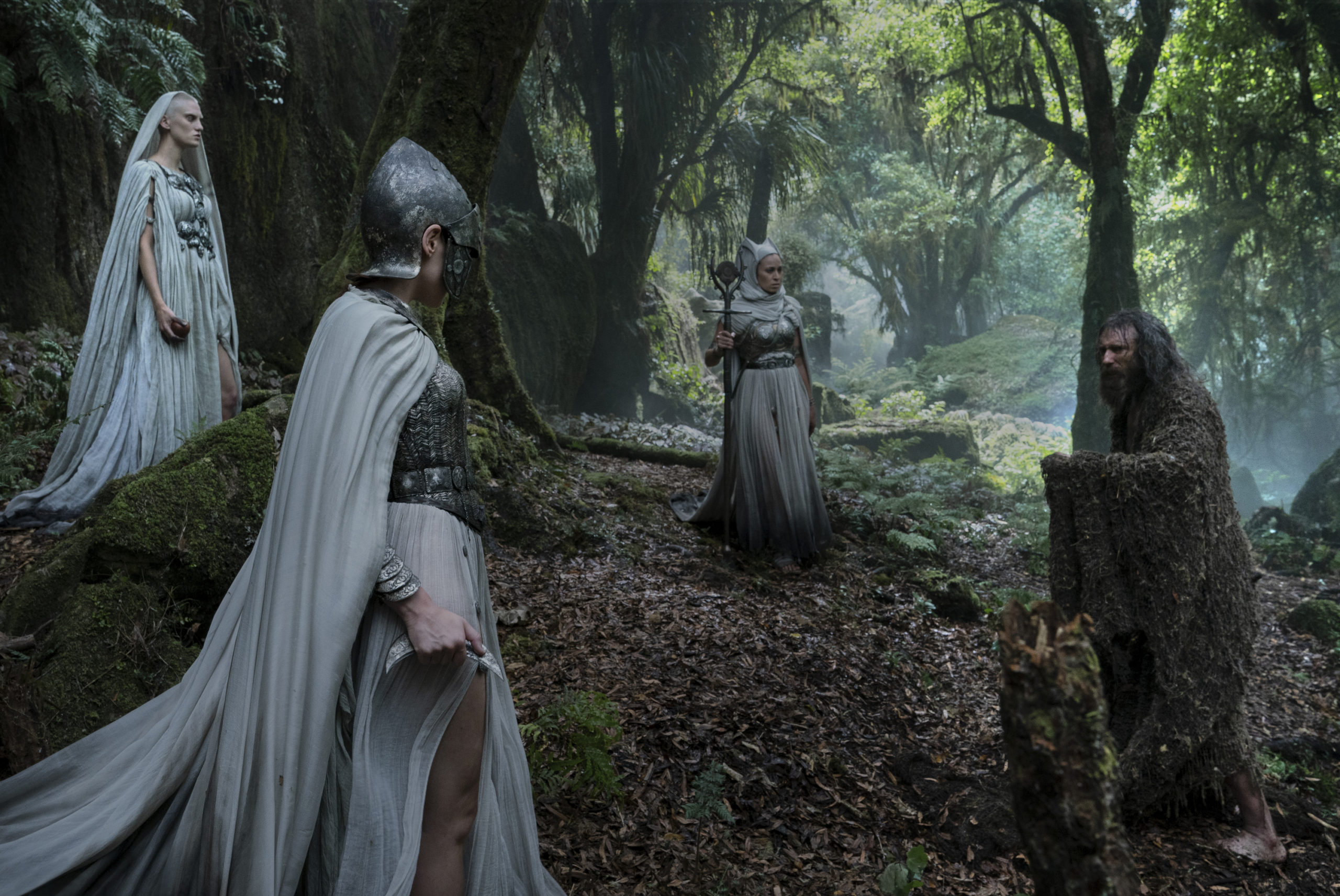
In the Greenwood, The Nomad, The Dweller and the Ascetic are trying to tell the stranger who he is, believing him to be Sauron. They tell him that he must travel with them to the land of Rhûn, in the far east of Middle Earth. They tell him that the constellation of stars he’s looking for is called the Hermit’s Hat and can only be seen from Rhûn, “where the stars are strange.” They promise that he will come into his true power there, “and every being that walks or crawls will be your slave.” He starts losing control of his powers and The Dweller puts him to sleep and they tie him up until he can learn to control himself. The Harfoots have caught up with him and watch this whole scene unfold from hiding. They (rather foolishly) attempt to rescue the Stranger, but they are deceived and quickly overtaken by the sorceresses. Sadoc is mortally wounded. In a pretty stirring sequence, the Stranger comes into greater control of his powers and attacks the three women. The Dweller, clearly the most powerful, if not the only magic user among them, uses her staff to toss him around (much like the iconic magic battle between Gandalf and Saruman in The Fellowship of the Rings). The Harfoots manage to stall the battle briefly, with Nori gaining possession of the staff, but The Dweller pulls out her old fire-breathing magic trick and torches the woods around them. Nori pleads with the Stranger to get up and help them, in a sequence that got dragged out a little too long. The Stranger believes himself to be Sauron, and thus a peril to Nori. She tells him that he gets to choose the kind of person he can be. “You’re here to help,” she says tearfully. “I know it.” Just as all seems lost and the Harfoots will be killed, that ol’ Tolkien eucatastrophe moment kicks in and The Stranger takes control of himself. “From shadow you came,” he says, suddenly articulate (and in possession of a lovely voice, it has to be said), “From shadow I bid you return!” The women understand that he is not Sauron, but rather, “the other. The istar.” He corrects them. “I’m good,” he says, before blasting them into oblivion. It’s a well-earned, fist-pump of a moment that made all of the Harfoot storyline worth it in retrospect. He uses the staff (which has transformed and now holds a giant diamond-like crystal) to reveal the three women as wraiths, although they would have to be considered something other than the Nazgul, whom they resemble, since they were created by possession of the nine rings of power for men, which haven’t been created yet. Then they are transformed into a flutter of moths, which dissipate on the wind. And thus do the three coolest-looking character designs of the season get dispatched, having barely uttered a word. They did what the story needed them to: they slapped the Stranger out of his stupor and revealed him to be the good wizard we all kinda knew he was. Also: Sadoc dies as the sun rises; the first major death of the story.
On the ships heading back to Numenor, Elendil checks in with Miriel, who’s trying to learn how to navigate the world as a blind queen. They have a talk about duty and forging ahead despite their losses. They exhibit a rather lovely bond which might be turning romantic. It’s a nice scene, but it ends with Elendil vowing his support for Miriel’s cause, which is a complete 180 from his attitude at the end of the previous episode. They go topside as they approach Numenor, discovering from the parade of black banners that the Queen’s father has died.
In Eregion, Celebrimbor’s accelerated attempts to craft an alloy with mithril aren’t going well. After an explosion in his workshop, Galadriel notices that the results are similar to the scenes she found in Sauron’s experiment castle in the north, with items twisted and melded together. Elrond says that messing with the barriers between the Seen and Unseen worlds are causing them to blur. Galadriel suggest stopping for the day because they’re pushing themselves too hard. This prompts Halbrand to suggest that they “coax” the metals together rather than force them. No one explains exactly what that means, but Celebrimbor is excited by the suggestion. Galadriel is more suspicious than ever and meets with the Loremaster, who has a scroll for her. Scrolls are rarely good news in stories like this. Halbrand comes to find her and excitedly tells her that they’ve cracked the problem and that they need to make two items rather than one. Again, no explanation is offered for how they came to that conclusion or how any of this works. To be fair, we wouldn’t want to see magic or the aspect of the Unseen World overexplained in this story. Tolkien left them vague for a reason. The inherent problem with a prequel extrapolated from an adaptation is that you’re almost forced to come up with explanation of things the original author didn’t feel the need to explain. It’s not wrong to keep the explanations vague, but it works against the whole idea of a prequel. We got an entire season-long arc just to explain the origin of Mount Doom, after all. Galadriel demands that Halbrand explain who he is, since there is no royal line left, for over a thousand years. Halbrand drops the veil completely and we finally get the payoff we’ve been waiting for all season.
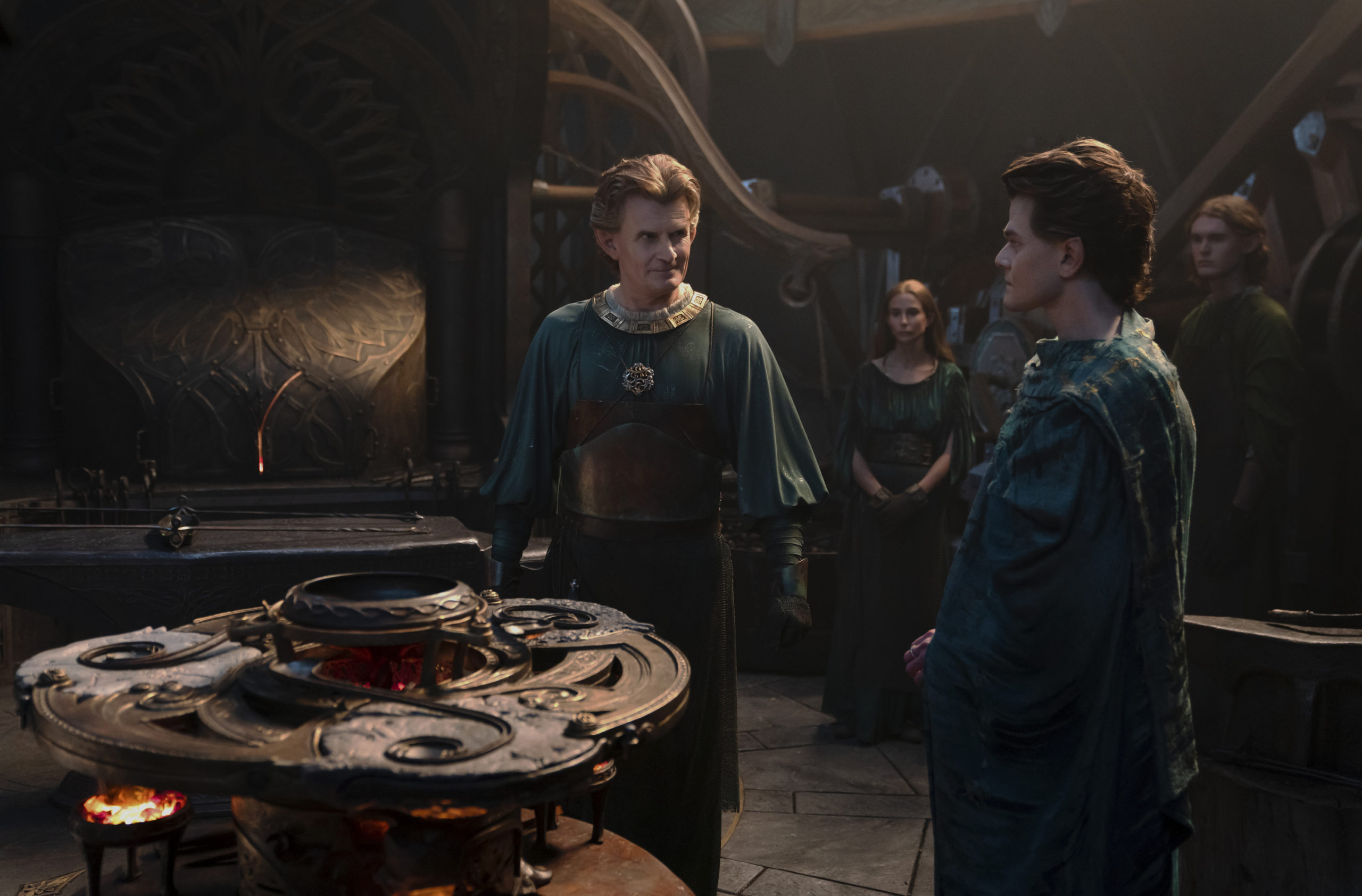
First, he confirms everything we pointed out all season; that he had manipulated Galadriel into taking him to Númenor, rallying an army, and fighting alongside him as they dispatched their common enemy: Adar. This suggests that Adar really did act independently to create Mordor and that he really did attempt to kill Sauron for experimenting on his children. She tries to stab him with her brother’s dagger and he throws her into a vision of Valinor, where he poses as her beloved lost brother Finrod and tries to get her to believe that Sauron is working to “heal” Middle-Earth. When she tries to walk away from him, she’s thrown into a vision of her time on the raft. Halbrand tells her that he’s her friend. He goes on to claim that after Morgoth’s defeat, he felt “the light of The One again” and that in order to get back to that state of grace again, he would have to heal everything he helped ruin. It’s tough to parse whether this is a deception on his part of whether he truly believes this. It might be a moot point, because as he points out to her, there is no difference to him in saving the world or ruling it. What makes this sequence interesting is his true appeal to her: to be his queen. “I alone can see your greatness,” he says to her, showing her a vision in the water of her being the great and terrible queen by his side, “stronger than the foundations of the earth.” This is, of course, a reference to Galadriel’s words to Frodo when he offered her the One Ring. These sorts of callbacks haven’t always worked in the story (there’s one at the end of the episode we kind of hated), but this is actually a sharp interpretation of Galadriel’s arc. Sauron always considered Galadriel one of his only true threats on Middle-Earth. It not only makes sense that he would try and bind her to him in this way, but it also makes sense that she had been disturbed by the dark vision of her that he put into her head, bringing it up again thousands of years later when someone else tried to offer her ultimate power. Obviously, she rejects his offer and he asks her what she thinks the Elves will do when they find out that Sauron lives because of her. She attacks him with the dagger and is thrown into the water. Elrond fishes her out and she’s back in Eregion. Halbrand has fled and she doesn’t tell Elrond or anyone else what she knows.
Fearing the reaction if she told them the truth, she warns Celebrimbor and Elrond to never have anything to do with Halbrand again but doesn’t answer any further questions about him. Does this work, given that she’s spent centuries trying to convince everyone that Sauron still exists? Probably not in the long term, but we can forgive the story for making her too upset and distraught to mention the truth. She suggests that they make three items with the alloy, since three bearers will provide checks and balances on each other. Celebrimbor tells her that he needs the purest gold and silver in order to blend it with the mithril and notes that her dagger is from Valinor, which means the metals in it contain light from the gold and silver trees. Again, this kind of works as a way of pulling together various themes and motivations. Did we need to learn that the three Elven rings were crafted from mithril and the remains of Finrod’s dagger? Of course not. But it does push this version of Galadriel a little bit closer to the ethereal being of the Third Age as she literally gives up her weapon in order to bear a ring of power. In other words, she’s moving from weaponry to magic.
Back at the Grove, the Harfoots are planning to reverse their migration (which means some time has passed, we suppose) while the Stranger and Nori prepare to say their goodbyes. He knows that the three mysterious women were wrong about his identity, but that they were correct when they said his answers could be found in Rhûn. “Betimes, our paths are laid before us by powers greater than our own,” the suddenly articulate Stranger tells her. “In those moments, it’s our task to make our feet go where our hearts wish not to tread.” We don’t know if that’s a Tolkien line, but it sure sounds like one. He also tells her that he’s a wizard. Now, at this point, everything is starting to point to the idea that he is not Gandalf, but rather one of the two mostly forgotten “Blue Wizards” who were sent to Rhûn in the second age, about which Tolkien wrote very little. However, after Nori decides to go with him (and we are treated to a goodbye scene that rivaled the end of Return of the King for length and also kind of contradicted an entire season’s worth of Harfoot culture-building) he decides on a path by smell. “When in doubt, Elanor Brandyfoot, always follow your nose.” This was the callback that made us groan out loud; first because it takes us right back to the Gandalf theory, since this is a direct quote from The Fellowship, with only the name changed, and second, because a callback like this one doesn’t actually make any sense. We can see why Galadriel might have had that “stronger than the foundations of the earth” phrase in the back of her head for a millennia or two, but it’s silly to think that Gandalf has been carrying this nasal advice around for an equal length of time. Besides, we really don’t want him to be Gandalf. You can take a Blue Wizard anywhere and do anything with them because Tolkien left their fates largely unwritten. You make that guy Gandalf and it’ll be four more seasons of winking nods to Ian McKellen.
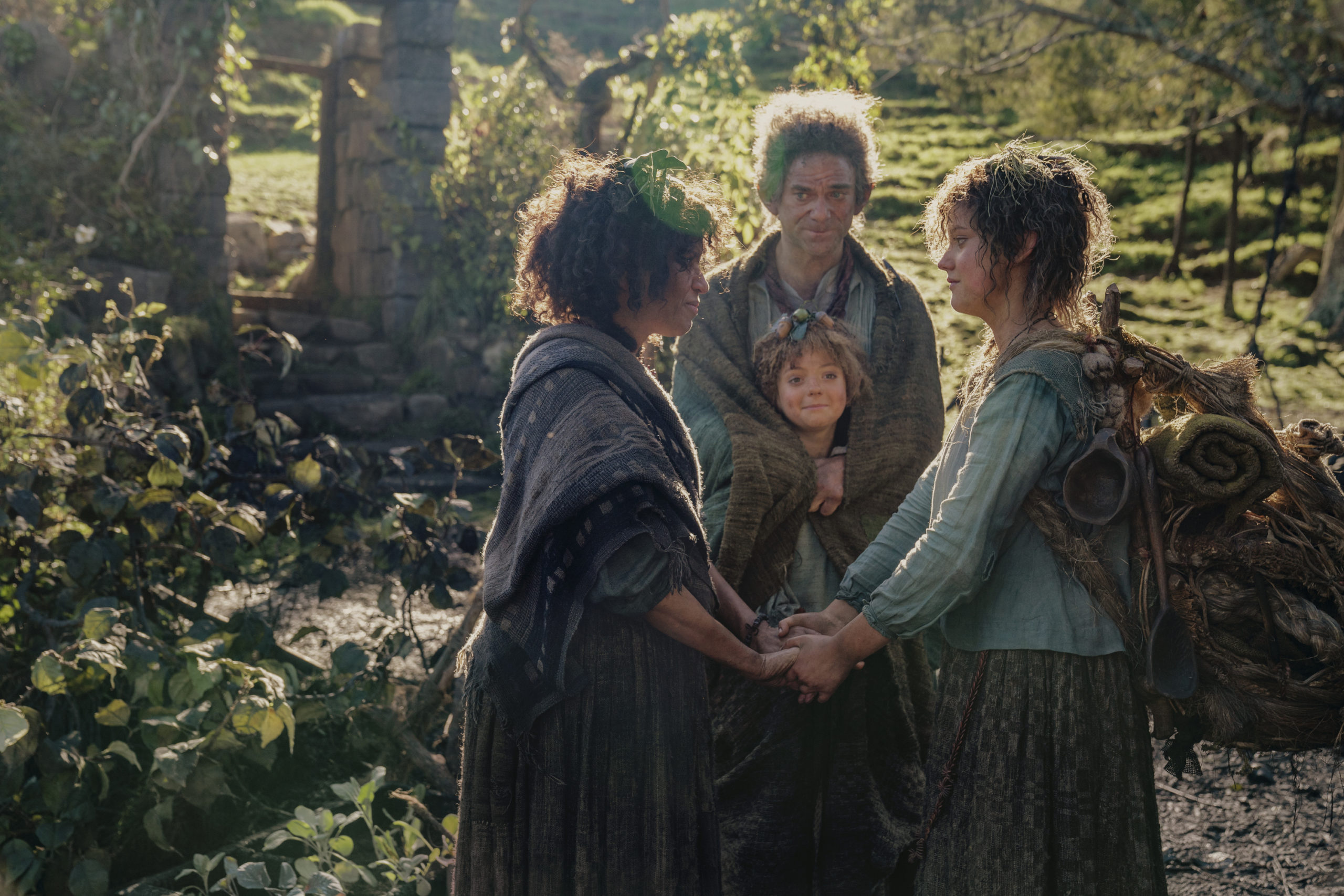
In Eregion, Celebrimbor completes the work on Nenya, Narya and Vilya, the three Elven rings of power. In Mordor, Sauron looks over his lands and makes plans for his next move. As season finales go, this was a pretty great one. Of course there are parts that work better than others. For the most part, Númenor has not been as captivating a place as it should be and the world of the Harfoots probably got more explained than it needed to be. There are at least a half dozen characters that just aren’t that interesting and some of them, like Elendil, really need to be in order for the story to work. But as an adaptation and extrapolation of Tolkien, we think the show works on a thematic level, even if it has to fiddle with the lore and compress the timeline too much. We think the most impressive thing about this first season is how it feels like a fully crafted first season of a show, with exactly the right amount of table-setting and character-building you need in order to tell a long-form tale. They spun all of this tale out of practically nothing; weaving in and out of the parts of the story written in stone and creating a mythos that sits alongside it, even if it doesn’t necessarily fit perfectly. Twenty-five years ago, it was the conventional wisdom that Tolkien was completely unadaptable. Peter Jackson disproved that, but he also may have inadvertently made it seem easier than it actually was. Showrunners J.D. Payne and Patrick McKay should be commended for the work they’ve done here. Regardless of any shortcomings the first season may have had, there’s no denying that like the original Lord of the Rings film trilogy, The Rings of Power is a hell of an accomplishment.
Next: “Elven Kings Under the Sky“
Reem Acra ‘Sweet Dreams’ Fall 2023 Bridal Collection Next Post:
Academy Museum Gala 2022: Tilda Swinton in Schiaparelli
Please review our Community Guidelines before posting a comment. Thank you!



